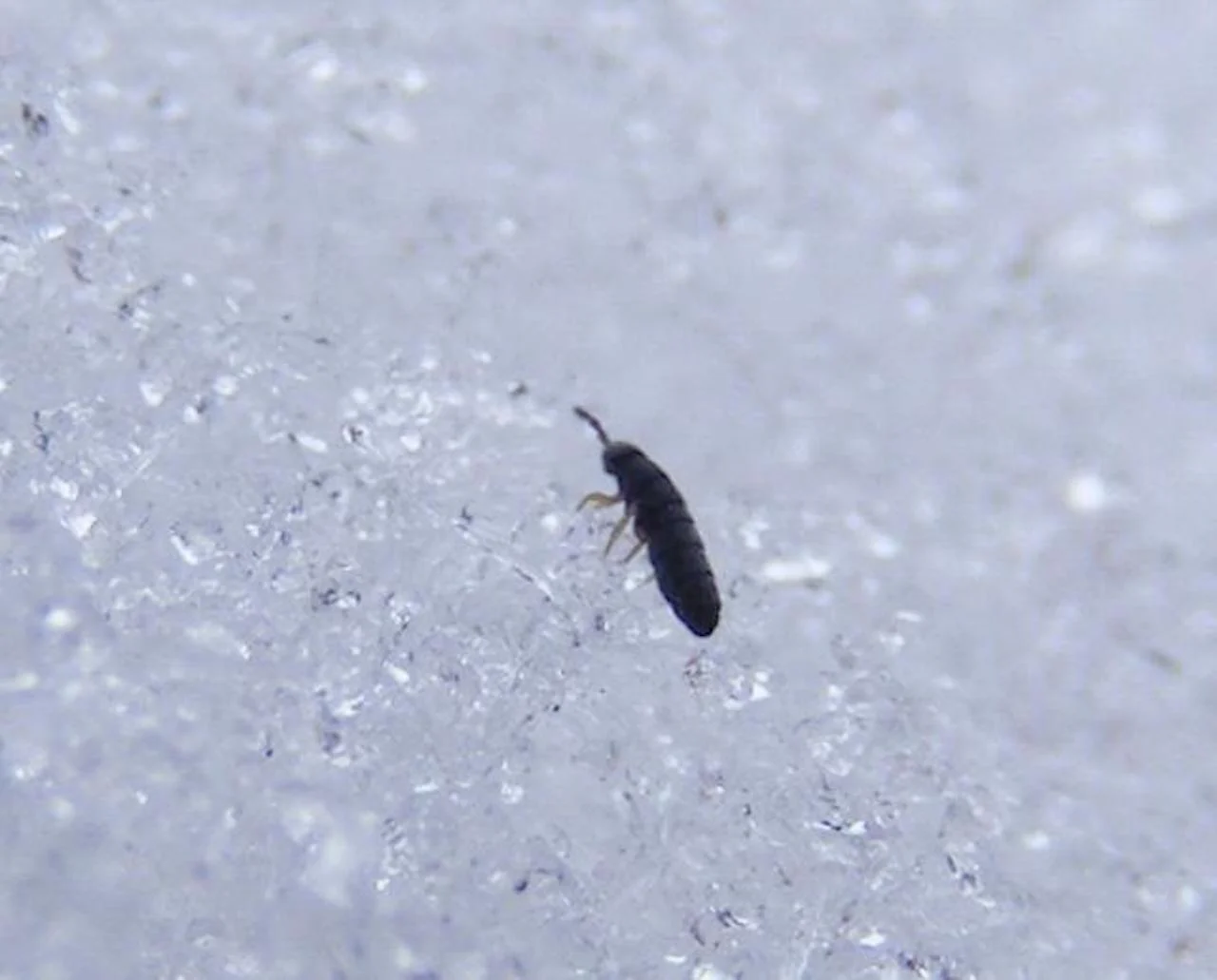
No need to flee from a snow flea (which isn't a flea)
The snow flea, despite its creepy-looking appearance, isn't a threat to humans or pets.
Despite its look and name, the snow flea isn't an actual flea or insect. And it isn't interested in drawing blood from humans or pets, so it poses no harm.
That's according to Marjolaine Giroux, an entomologist/educator at Montréal Insectarium. The critters are actually springtails -- tiny arthropods that are close cousins of insects, belonging to the species Hypogastrura nivicola.
SEE ALSO: Snow fleas to emerge as snow begins to melt in P.E.I.
The springtail is dark blue and only measures 1-2 millimetres in length. With no wings attached, the snow flea walks with the aid of claws on the end of its six feet. For quicker mobility, it uses its furca, a fork-shaped appendix located under its abdomen. The furca can help it propel itself into the air and to vault long distances. This is a defence mechanism as it provides an escape from predators or humans who get too close.
WHY SNOW FLEAS APPEAR ON THE SNOW
According to Giroux, springtails live in soils that are rich in organic matter, as well as along bodies of water. In the spring, when the temperature is around 0°C, they surface through the layers of snow, often at the base of trees or close to large rocks.

Snow flea. Photo: Daniel Tompkins/Wikipedia.
Several-hundred individuals can be found in the same spot, composed of little clusters -- similar to black dust -- deposited on the snow. When the temperature falls, they retreat to where they came from.
If springtails come up to the surface, they do so to feed on the algae, microorganisms and fungus spores that they find on the snow, Giroux says.
"Since the start of winter, their metabolisms have been at rest. They breathe less, no longer eat, don’t grow, and have stopped breeding. They survive in cold temperatures notably thanks to anti-freeze proteins present in their blood," said Giroux.
The presence of the proteins in their bodies therefore prevents the critters from bursting if they swallow too much ice.
IT AIDS IN DECOMPOSING MATTER
Because of their abundance in the soil, their feeding activities assist in decomposing organic matter, returning nutrients to the soil and making them available to plants, the entomologist said. The springtails also serve as food for many small animals and "exercise a degree of control" over the fungus, bacteria and nematode populations present in the environment.
"So, if at some point during a springtime stroll with friends you notice some snow fleas, reassure them (the friends) by pointing out that, unlike fleas, these minuscule beasts don’t bite, and they won’t infest you," said Giroux.
Thumbnail courtesy of Daniel Tompkins/Wikipedia.










